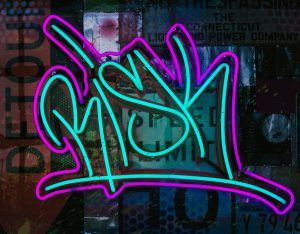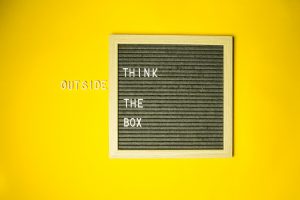I have been privileged to attend many cultural events and festivals in the city I call home, and I am thankful for that. I have sampled many tasty bites of different ethnic[1] cuisines, been entertained to the core by numerous dances, and tapped my feet to the beat of many musical performances. In these instances, I behaved like a tourist: a spectator and consumer of culture[2].
What does this have to do with leadership development in intercultural competence[3]?

Very little, actually, because this is not the way I have been learning to improve the attitudes, knowledge, and skills that have allowed me to interact appropriately with people from cultures different from mine.
Last spring, during a conference presentation, I declared that one could not develop intercultural competence through osmosis, for example, by eating the food of another culture. I remember how most of the audience burst out laughing while some of them blushed the colour of red lobsters. Obviously, I had struck a chord: I had exposed a common and, unfortunately, redundant practice.
Well, then, what does this mean for organizations? It means they need to …

taking the “tourist approach” to diversity and inclusion and to engaging with cultural differences.
Organizations need to do better than, for example, arrange regular so-called international pot lucks where employees eat the food prepared by their co-workers who originate from countries far away. It means that diversity[4] and inclusion[5] programming cannot begin and end with food, drink, and entertainment.
The “tourist approach” (my own expression) to engaging with cultural differences is shallow and more to the point, ineffective, if leaders and managers are still unable to communicate appropriately with their diverse talent, because they have not yet developed a basic understanding, acceptance, and respect for their employees’ cultural differences.
This approach does not help to build inclusion if intercultural conflicts continue to erupt or, worse, are ignored, avoided, resented, or suppressed, because managers lack the knowledge, skills, and attitudes to recognize, identify, and address issues related to cultural differences.
Moreover, such an approach does not inspire confidence in diverse employees if they are still reluctant to express themselves and their differences openly and fully, because they are afraid there will be negative consequences to their jobs if they do so. These differences, it is also important to point out, are not only limited to ethnic or national differences, but include differences pertaining to all kinds of diversity.
In short, the “tourist approach” creates unnecessary risk for the organization if ignorance, bias[6], stereotypes[7], inaccurate assumptions, and norms continue to rule the day to day operations in organizations.

A case in point …
is the story of a manager who disregarded an employee’s religious practice by throwing away an object the employee used to perform that practice and that the employee stored on the organization’s premises.
Prior to throwing away the object, the manager did not make any attempt to communicate with the employee or reach an agreement of some sort. Clearly, the manager disrespected the employee’s property although that organization had had its fair share of pot lucks, some of which the manager had arranged. Sadly, but of course, not surprisingly, no respect for the employee, the employee’s religion, and the cultural difference the object symbolized had emerged from those pot lucks.
Now, just to be clear, cultural festivals are a lot of fun and they have their time, place, and purpose, but they are inappropriate models for diverse organizations that are striving towards inclusion.
Here is an analogy for you to chew on: imagine yourself on a beautiful tropical beach enjoying a hard-earned vacation. That’s easy enough to do especially in the height of winter. Then, imagine building a house on the soft and shifting sands of that same beach. Of course, you wouldn’t. Why, then, would you put your organization at risk and build it on the shallowness of the “tourist approach”?
But, don’t despair! All is not lost. One of the first steps to putting a halt to this risky approach is to …

of long-standing organizational practices that are assumed to help leaders become more engaged with cultural diversity. As you do so, consider these questions to help you build an alternative and better approach:
- How does your organization help its leaders to gain self-awareness about their capability with cultural differences?
- What kind of role modelling is needed in this area and who should provide it?
- What tools do you need to help leaders gain self-awareness?
- Who needs to be consulted and involved in this process?
- What kind of attitudes, knowledge, and skills would you like your leaders to acquire?
- What kind of support for success will you provide for this development?
- What kind of incentives will you provide for this development?
- How can you incorporate this initiative into your organization’s business case?
Need more information or help with this issue? Send me a message at: [email protected] and I would be thrilled to have a conversation with you about it. Thanks for reading!
Footnotes:
[1] Ethnic: a social construct which divides people into smaller social groups based on characteristics such as values, behavioral patterns, language, political and economic interests, history, and ancestral geographical base.
[2] Culture: The shared patterns of behaviors and interactions, cognitive constructs and affective understanding that are learned through a process of socialization. These shared patterns (values, beliefs, practices, etc.) identify the members of a culture group while also distinguishing those of another group.
[3] Intercultural competence is the ability to develop targeted knowledge, skills and attitudes that lead to visible behavior and communication that are both effective and appropriate in intercultural interactions.
[4] Diversity includes all the ways in which people differ, and it encompasses all the different characteristics that make one individual or group different from another. A broad definition includes not only race, ethnicity and gender —the groups that most often come to mind when the term diversity is used —but also age, national origin, religion, disability, sexual orientation, socioeconomic status, education, marital status, language and physical appearance. It also involves different ideas, perspectives and values. A diverse group, community, or organization is one in which a variety of social and cultural characteristics exist.
[5] Inclusion: Authentically bringing traditionally excluded individuals and/or groups into processes, activities and decision/policy making in a way that shares power.
[6] Bias is prejudice in favor of or against one thing, person or group compared with another, usually in a way considered to be unfair.
[7] Stereotypes: blanket beliefs, unconscious associations and expectations about members of certain groups that present an oversimplified opinion, prejudiced attitude or uncritical judgment. Stereotypes go beyond necessary and useful categorizations and generalizations in that they are typically negative, are based on little information and are highly generalized.
References:
Diversity, Equity and Inclusion Terms, https://www.uh.edu/cdi/diversity_education/resources/pdf/terms.pdf
Diversity and Inclusion Dictionary, https://inclusive.vcu.edu/media/inclusive-excellence/DiversityandInclusionDictionary.pdf
Glossary of Bias Terms, https://diversityinclusion.wustl.edu/brss/glossary-of-bias-terms/

